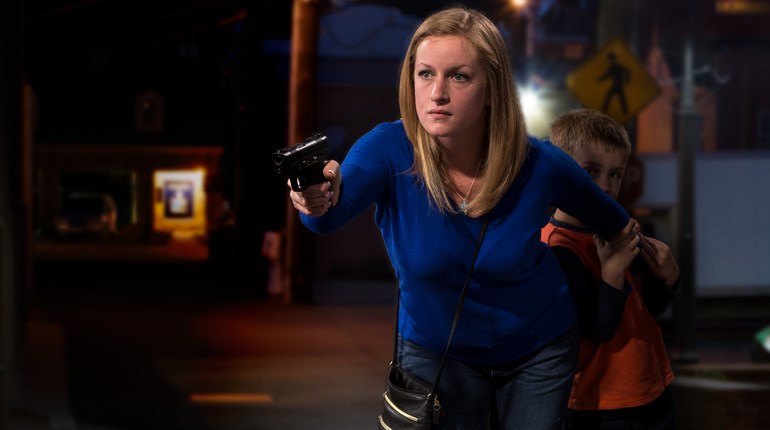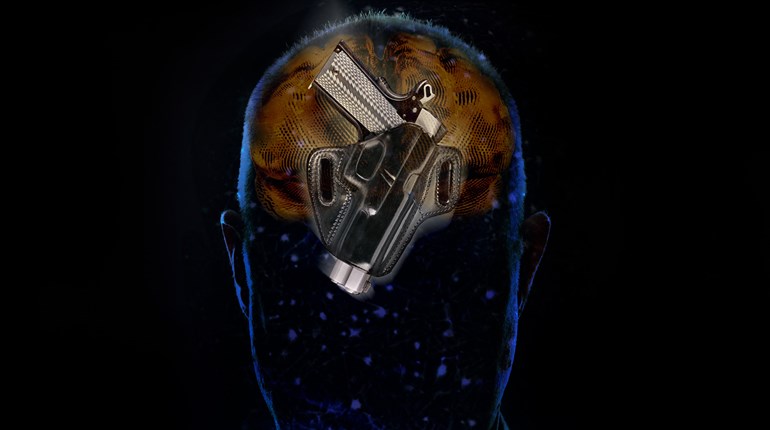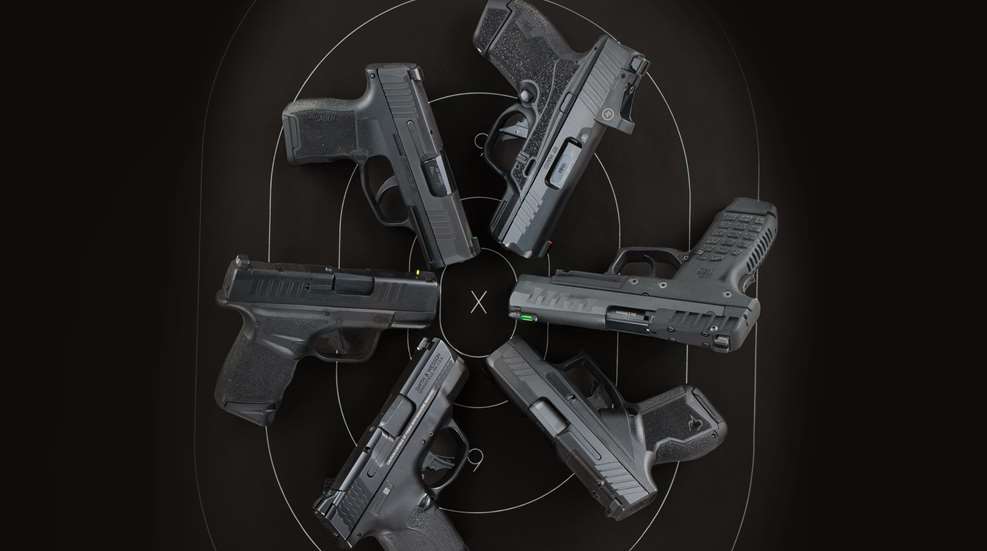
With the number of students coming through my classes with the popular sub/micro-compact pistols at an all-time high, it is a great moment to talk about how to set yourself up for success. There was a time when I would frown upon the decision to use such pistols, but generally it was because I knew the student would have a more difficult time grasping the basics. This theory proved true at times, but it also forced me to dive deeper into the basics. The real challenge is twofold: the first is self-imposed and the second is a matter of understanding the physics involved. The suggestions I make in class and provide in this article have been shown to help create a positive experience with the micro-compact pistol. From that positive experience, the shooter can further expand their skill level. Two of the three suggestions are something we can work on in class, but one is something you need in advance of class and that is more magazines. The two we work on in class have to do with improving your shooting platform and refining your crush grip.

When the craze for micro-compact pistols started, there were only a few options available. Now, however, there are a lot more from which to choose, along with more support gear. What I like about the new craze is the improvement of the platform in the first place. What we are seeing is a pistol that has a minimum of a 10-round magazine capacity with a barrel length right around 3 inches and a frame height slightly more than 4 inches. Weight unloaded, depending on accessories, is generally in excess of a pound—somewhere between 17 and 20 ounces. This combination makes for a great pint-size package ideally suited for everyday carry. When the SIG Sauer P365 came out in 2017, it took the firearm industry by storm. It has been one of its strongest selling items to date because it fits so perfectly into the micro-compact description.
Shortly after the introduction of the SIG P365, we started seeing micro-compact pistols more and more in classes, especially our concealed-carry classes. I love seeing students bring these little guns to class, but they are not without unique challenges. I don’t look at these as problems—they are achievable challenges to be overcome with proper guidance. The worst thing you can do as an instructor or teacher is to criticize your student’s firearm choice (unless, of course, their choice is unsafe or inoperable). I’ll be honest; a lot of the firearms we see in classes are not my ideal choice. It is not for me to say whether that is a right or wrong choice, though. My job is to work with what you have and build your skill around the platform you brought. By the same token, I’m not going to sugarcoat the challenges. I’m going to be honest, give them to you in order or precedence of priority and help provide the tools you’ll need to manage and overcome the challenges and will ultimately lead to positive skill development.

As I mentioned earlier, in today’s market there is a strong accessories-support base allowing the end user to purchase everything from aftermarket sights to additional magazines. In a normal weekend class, students can expect to expend anywhere from 500 to 1,000 rounds of ammunition. The first recommendation is to invest in more magazines and, if available, greater-capacity magazines. Since many of these micro-compact pistols have a 10-round magazine capacity, you end up spending a lot more time loading magazines in classes. We generally ask students to return to the firing line with 50 rounds of ammunition loaded in magazines. If you are running a full-size or compact handgun, that could be as few as three magazines, but is obviously substantially more for a micro-compact. You can carry a pocket full of loose ammunition to load in the short breaks while on the firing line, but this is my least-favorite option as it is very hard to pay attention while loading magazines or doing any other activity. While the idea of being able to multitask seems reasonable, it is far from practical.
Taking the time to load a good number of magazines in advance will pay off when you are not missing out on training or instruction. Some of the micro-compact pistols have factory-magazine options with larger capacity. So, you might get a couple of 10-round magazines with your initial purchase, but be able to purchase a 12- or even 15-round magazine to supplement. While not ideal as your primary magazine in the pistol when concealed, these larger magazines are great for backup purposes.
I was reluctant to add this as a requirement, but it does at least bear mentioning. Increased hand and forearm strength can be very helpful to improved shooting performance. It is not something that comes quickly and will take time to develop. I encourage all new and even veteran shooters to make hand and forearm strength a priority. In the interim, I recommend investing some time into wrist and forearm mobility and stretching. I have taken to simple and effective movements I perform before and after class. In the beginning, you need no equipment or tools, just a little bit of know-how will go a long way. I start with wrist rotations in both directions. Start with a lower volume of work or repetitions in the beginning for all the movements described. The next movement starts with palms facing down. I raise and lower my hand. Then I repeat with my palms facing up. It would seem the same, but in fact it is much different. With my thumbs pointing up and fingers straight, I flex my wrist inward and outward. I repeat with my thumbs facing downward. Place your palms together with your fingers straight close to your chest as if praying. Lower your hands until you feel a good stretch. These are great for mobility, but strength is a whole other ballgame we will save for later.
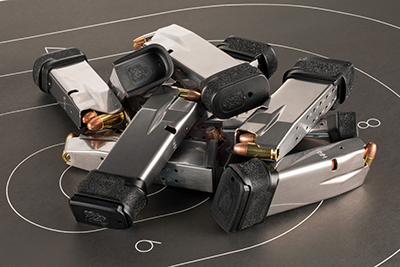
What I like about teaching people to shoot micro-compact pistols is how these pistols exaggerate many flaws in your existing technique. I use the term “full-size forgiveness” to describe the ability to sometimes get away with poor technique. When shooting these micro-compact handguns, a common complaint is the exaggerated recoil. This, of course, is to be expected, as we are not only shrinking the size but also the weight of the handgun; two very important aspects that can affect recoil control.
Your shooting stance is made up of two parts: the lower unit and upper unit. So, everything below the waist is your lower unit and above, the upper unit. When it comes to the lower unit, here are three things you can do to improve recoil control. Start with a more athletic stance, one that is action biased. We must remember that being static is ideal for learning, but being dynamic is more realistic. If are feet are free to move, then hopefully they will favor movement, and movement is life. With an athletic stance, shift your weight onto the balls of your feet. By shifting your weight onto the balls of your feet, you are angling your torso forward. This puts more weight behind the recoil. Lastly, keep your hips squared to the target. The moment you blade your hips to the target, you will create a path of least resistance that will angle the muzzle off the target. When the hips are squared, paired with an action-biased stance leaning forward, the recoil impulse travels into the center of mass for better absorption. When your shooting stance is paired with a crush grip, recoil control becomes far more manageable.
I’ve talked at length about what we call a crush grip. In our classes, we spend a fair amount of time instructing or reviewing this topic because it is so important. You may not have the luxury of a good shooting stance, but a crush grip should always be a given. Now, of course, everyone is built different, and there are several different sizes of micro-compact pistols. However, the principles of a good crush grip will transcend most variables. It all starts with friction, which is generated by occupying as much surface area as possible. To do this well, you must understand there are optimal and suboptimal ways to grip a handgun. We start by placing our trigger finger on the home position. This position is defined as the intersection between the slide and frame. When you are not actively engaging a threat, your finger is at the home position. Contact your middle finger under the trigger guard and wrap the remaining fingers around the grip.
Here is a sticking point: Some shooters cannot wrap their pinky around the frame. Don’t worry; continue to curl the pinky below the magazine base into the palm of your hand. With your weak hand, take your index finger and lay on top of your strong hand’s middle finger contacting the underside of the trigger guard. Continue to wrap the remaining fingers around your strong hand. I have found that with most micro-compact pistols, I may not be able to fit my strong-hand pinky on the frame, but my weak-hand pinky can find a home on the back of my strong hand. Now, here is the key or the secret: Apply pressure to the frame with your pinkies. Don’t so much worry how hard you grip with the rest of your hand, but crush the grip as hard as you can with your pinkies. Trust me, the rest of your fingers will know what to do.
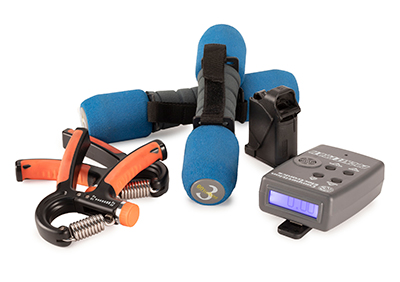
To master shooting the popular micro-compact handguns you need quality range time. There is a learning curve like anything we choose to master. The more time you put into improving your technique, the shorter the dwell time toward mastery. To make the most out of your range time, you want to invest in more of the more capacious magazines. This will allow you to spend more time perfecting your technique and less time loading magazines. When on the firing line, pay attention to your posture. Favor an action-biased or forward attitude in your stance. Get the weight on the balls of your feet. From there, make sure your shoulders are in front of your waist to complete the forward lean helping to control recoil.
Employing a crush grip gives you a huge advantage, just be sure to be consistent and all-in with grip pressure. If your pinky doesn’t fit, don’t worry. Press it into your palm and squeeze it hard. When you can apply pressure in this manner, not only does it impart a lot of control, it also increases the amount of available surface area you contact, thereby increasing the level of friction. These three simple suggestions will go a long way toward helping you to master shooting your micro-9 mm pistol and bringing your concealed-carry game to the next level.












